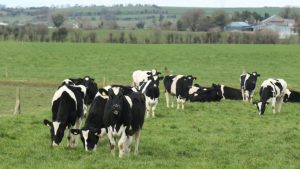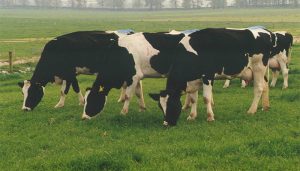
Two common queries have been the possibility of cutting back on N applied, and also the merit of delaying first cut to achieve greater bulk.
In terms of N application rate, the advice has been to maintain at least 100kg N per ha for first cut (125kg per ha if the farm is short of feed). Our most recent survey data has shown that dairy farmers have taken a pragmatic approach to fertilizer despite the cost, with the majority spreading close to the same NPK rates on silage ground as other years. This is welcome from a feed security point of view and should lead to good yields of first cut.
A similar approach will be needed for second cut fertilizer- N rates should be kept close to normal (85 to 100kg per ha) if forage deficits are to be avoided. This is a better option than having to buy feed to make up deficits later in the year. Thankfully, most dairy farms in the Munster region have good stocks of silage left over from last winter to bolster feed security. The advice is to complete a feed budget after first cut to provide good information for forward planning.
As regards cutting date, at first glance there is an understandable temptation to delay first cuts this year in order to ‘spread the cost’ over more tonnes. Of course good first cut yields (>5 tonnes DM per ha) are needed, but this should come at the expense of quality or indeed yields from subsequent cuts and grazing.
Silage quality for dairy farms
It is often argued also that spring-calving pasture-focussed dairy farms feed silage mostly to dry cows and do not require significant stocks of quality feed. However, in a typical spring calving system stocked at 2.5 to 2.8 cows per ha, up to 50% of total silage will be consumed by milking cows. This will increase for farms at higher stocking rates, or farms operating on heavy land. Furthermore, all young-stock silage and 100% of recommended silage weather reserve (400kg DM per cow) should be of good quality. This highlights a requirement to put a strong focus on silage quality as well as quantity.
A major factor in determining silage quality (as measured by dry matter digestibility or ‘DMD’) is grass growth stage at cutting (Figure 1). Final DMD drops quite rapidly once grass reaches heading date (1 to 1.5 units every 3 days). The crop must be harvested before seed heads emerge to achieve 74% plus DMD, and at the latest within 3-4 days of seed head emergence to achieve 70% DMD silage.
Many farms delay cutting due to fertilizer N spreading date despite good conditions base on the rule-of-thumb that grass uses up 2 units of N (2.5kg) per day. Fertilizer N should be applied approximately 50 days before planned cutting date. However, the crop may be harvested sooner depending on nitrate and sugar levels. Test the crop rather than delaying cutting based solely on the ‘2-unit rule’. Wilt grass to >28% DM to aid preservation if nitrate readings are high. Tedding out grass for 24 hours in dry conditions is recommended.
Up to 10% DM losses are possible in the pit and at feed-out. Fill and seal pits rapidly and completely. Monitor pit covers and bale plastic regularly through the summer Maintain a tidy, cleanly cut pit face at feed-out to keep losses to a minimum.
Will yield be compromised too much by cutting for quality?
A valid concern with targeting quality silage for first cut is potential reduction in silage yield, which may contribute to silage shortages later in the year. On this point, it is vital to consider the yield of forage DM across the year as a whole, not just from a single cut. Figure 2 shows the effect of different first-cut dates on total grass silage DM and forage energy (UFL) yield per ha, in a two-cut system with a fixed second cut date in late July.
Figure 2. Effect of first cut date on total silage DM and UFL yield in a 2-cut system

There was no advantage in total DM production to delaying first cut due to poor yield at 2nd harvest. In addition, first cut silage was lower in DMD and not suitable for growing cattle or lactating cows. Delaying second cut further for the later first cut swards would have reduced availability of autumn after-grass and negated any silage yield benefit.
From a cost perspective, delaying first cut would not result in significant dilution of land charge (due to similar total DM yield per ha), while contractor costs would be similar (particularly on a bale silage system). Management decisions around first cut silage yield should therefore be made on the basis of meeting DMD targets and improving annual grass tonnage per hectare, rather than focussing solely on the bulk of an individual cut.
Summary
Fertilizer and feed prices remain very high and are likely to remain so through autumn and next winter. While expensive now, the best policy is to maximize the production of quality feed on the farm by good use of NPK nutrients (fertilizer, slurry) to grow crops for grazing and silage. Lime also has a hugely beneficial role to play on grazing ground and where silage is finished for the year. Focus on quality as well as yield for first cut; waiting too long to cut in order to ‘bulk up’ crops is a false economy if quality declines. Do up a simple winter feed budget with your adviser and remove passenger animals from the farm sooner rather than later.

Fig 1. Growth stage at cutting determines silage DMD

























